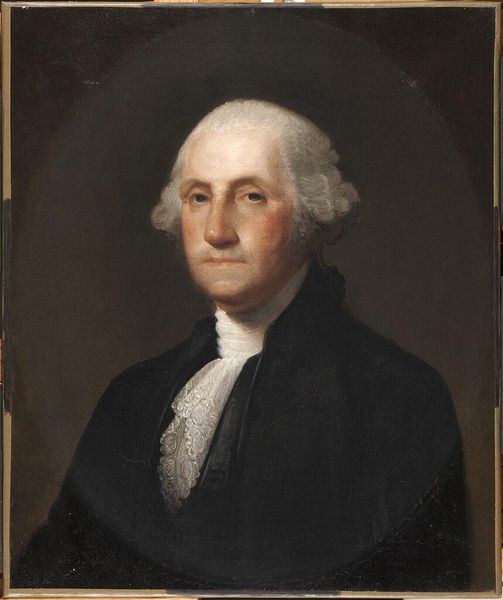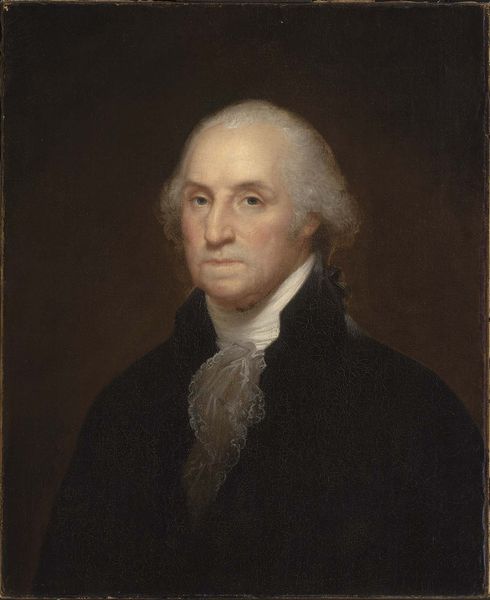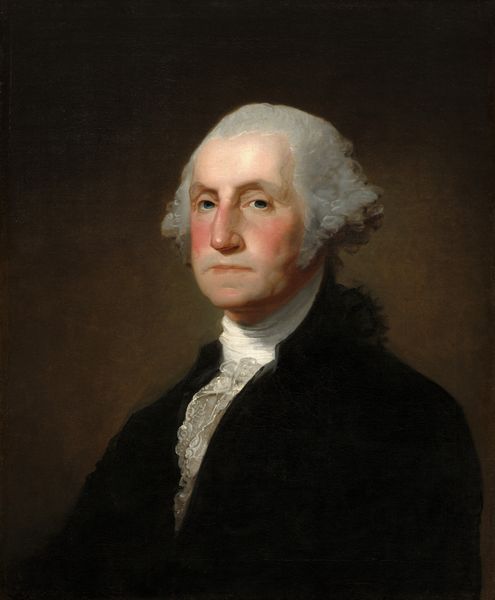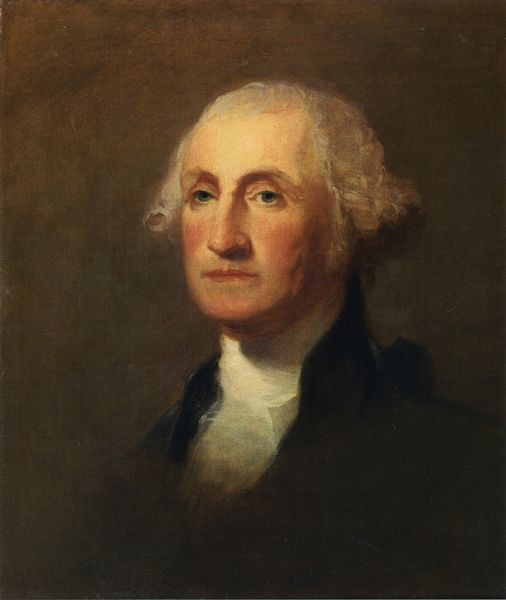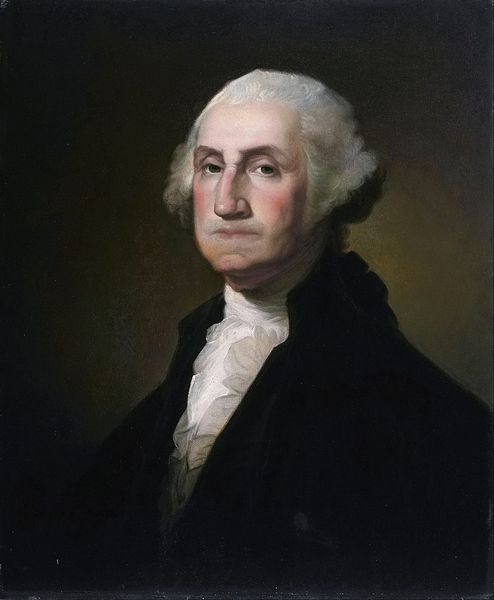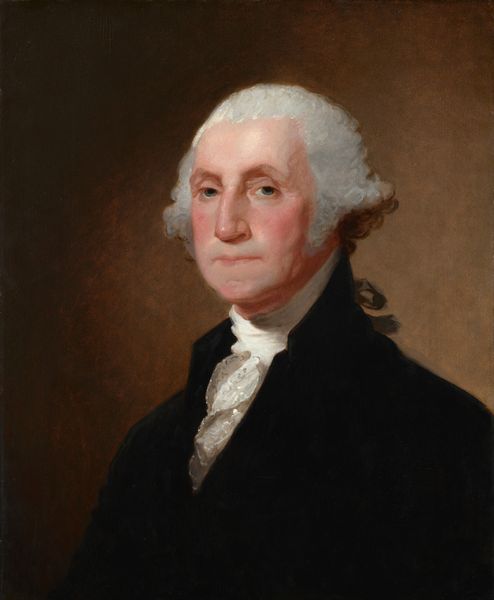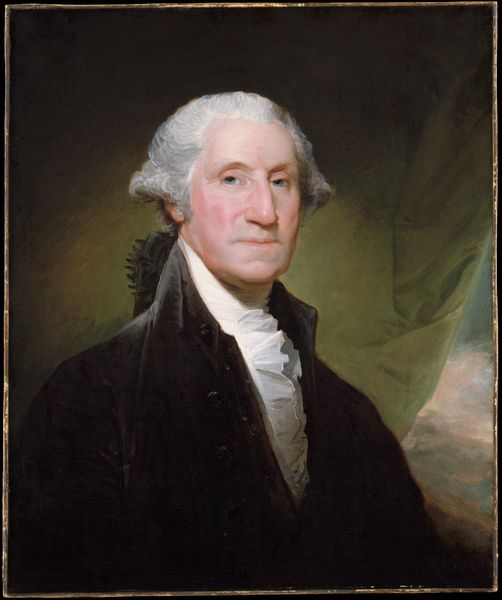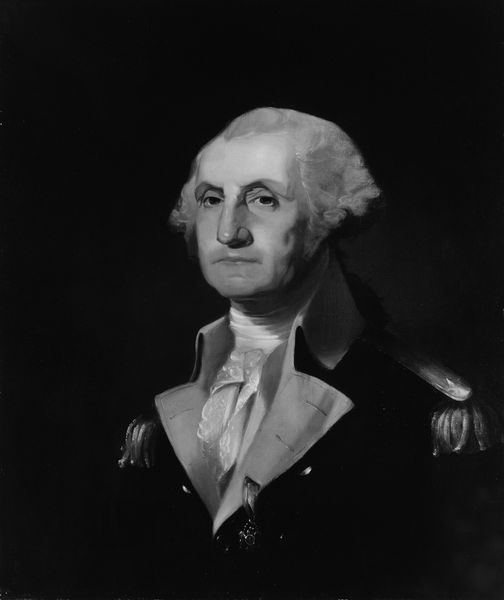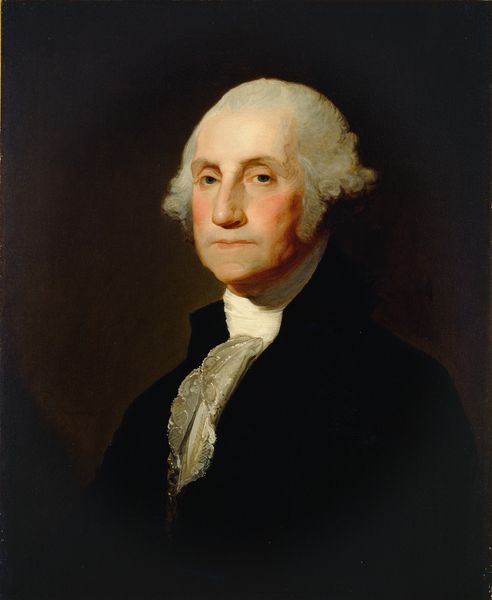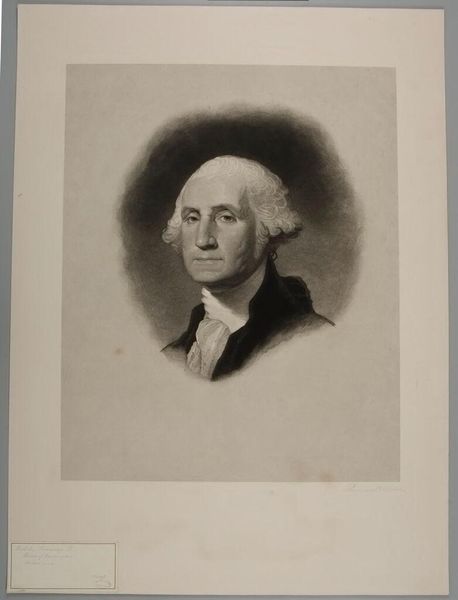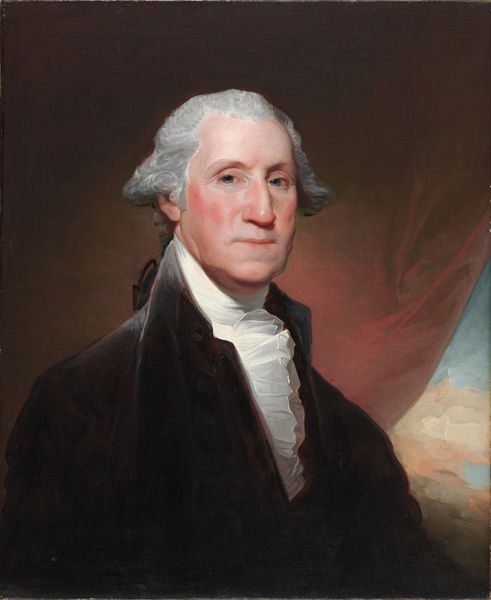
Dimensions: H. 22 3/4 x W. 18 inches (57.8 x 45.7 cm)
Copyright: Public Domain
Editor: So, here we have a print from 1893 titled "President George Washington" by Mathevon et Bouvard. It's interesting how they chose to depict him; almost…serenely detached. What symbols or meanings do you think the artists were trying to convey here? Curator: That detachment you observe is key. Think about the symbols normally associated with power. What's absent? We see no crown, no scepter, no military garb in this portrait. Yet, he undeniably commands attention, doesn’t he? This portrait operates within the Neoclassical tradition, so its symbolic language is about rationalism and civic virtue. Editor: Yes, the focus seems to be on his character rather than his authority. Is the intention to almost idealize him, remove him from the chaos of the moment? Curator: Precisely. It’s about imbuing Washington with timeless, virtuous qualities. That plain background? It doesn't depict a specific moment in time. Instead, it seeks to establish a sense of enduring, almost mythic presence. What feelings does that simplicity evoke in you? Editor: A sense of… weightiness. Like the man and the office are inseparable, monumental, permanent even. It’s interesting how a lack of specific symbols can be such a strong statement in itself. Curator: Absolutely. And the print medium itself? It’s not accidental. The printing press allows for wide dissemination, to bring his image into the homes and minds of the populace, furthering that constructed legacy. These visual symbols, consciously chosen, carry immense cultural and psychological weight. Editor: I hadn't considered how the medium amplifies the message. It makes me rethink the intent behind the portrait. Thank you. Curator: Indeed. These deliberate choices shape collective memory. It makes one wonder, doesn't it, about the portraits we are creating today?
Comments
No comments
Be the first to comment and join the conversation on the ultimate creative platform.
